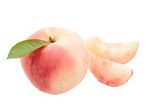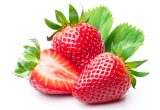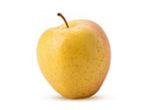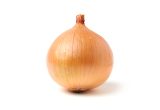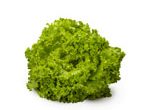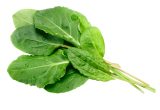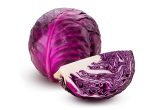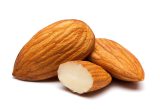Peach (yellow)

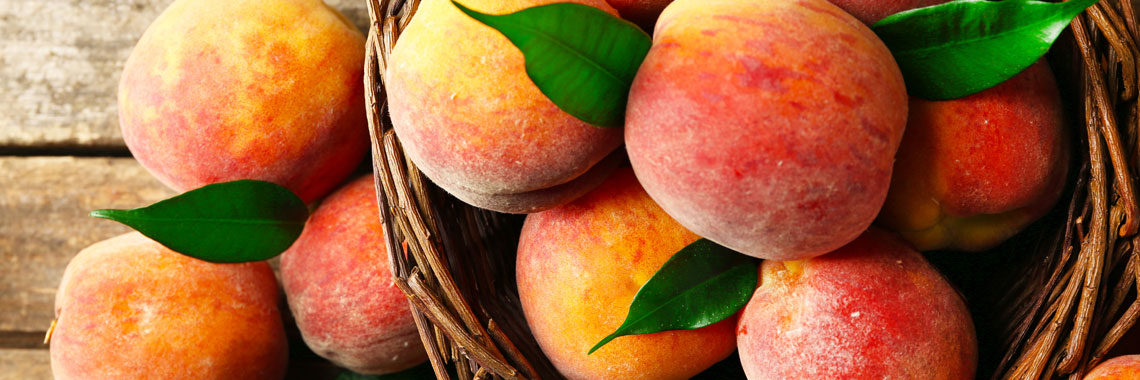
Description
- Yellow peach is the fruit of the peach tree, a fruit tree that belongs to the Rosaceae family, genus Prunus, species persica. This fruit tree is native to Asia (Janick, 2010).
- There are many varieties, such as Spring Lady® Merspri, May Crest® Minastar cov and Conquise cov, which are mainly planted in Occitania (DRAAF Occitanie, 2015).
PHYSICAL AND ORGANOLEPTIC CHARACTERISTICS
- Peach has juicy, sweet and tasty flesh (Saidani, 2017).
- For both yellow and white peaches, the main pigment responsible for the red colouration of the skin is cyanidin (polyphenol), and more specifically cyanidin-3-glucoside. Moreover, it is one of the pigments found most often in some red fruits (Ravaglia, 2013).
- The skin of the yellow peach is medium thick and medium hard. The flesh is dark yellow, red in the hollow, firm, and has a fine texture (Cantin, 2011).
- Its growth depends on its water supply. This has an impact on the quality of the peach, especially on the fleshiness of the flesh (Eldem, 2012).
- Peach flavour depends on a delicate balance of sugars, acids, phenolic compounds and aroma compounds, with a number of additional factors, such as pulp texture, also influencing perceived quality (Predieri, 2006).
- The distribution of lactones is different in peach skin and pulp: the longer the carbon chain, the less is found in the skin (Aubert, 2007). These compounds have an important role as flavour precursors (Aubert, 2003).
COMPOSITION CHARACTERISTICS (excluding macronutrients, vitamins and minerals)
- A study on peach cultivars containing significant amounts of phenolic acids and flavonoids showed relatively higher antioxidant activities than nectarines (Zhao, 2015).
- The concentration of phenolic compounds is higher in the skin of yellow peaches than in their pulp. Flavonols were exclusively found in peach skin (Scordino, 2012; Saidani, 2017). The skin of yellow peach contains a significant amount of polyphenols (up to 276 mg/kg for Riesi de Silice yellow peach) (Scordino, 2012). In the flesh, the total polyphenol content varies between 10.5 and 45.1 mg/100 g and flavonols vary between 0.71 and 2.76 mg/100 g (Saidani, 2017).
RAW
The following values are approximate and depend on variety, season, ripeness, cultivation conditions, etc. Yellow raw peaches (pulp) provide an average of 46.30 calories (kcal) per 100 g, i.e. 196 kJ.
COMPOSITION TABLES
For each nutrient, the tables provide information on the content, the minimum and maximum values, as well as the percentage of the Dietary Reference Values (DRVs) per 100 g net of yellow peach (pulp).
MACRONUTRIENTS
| Constituent (g) | Average content |
Min-Max per 100g |
DRV% |
|---|---|---|---|
| Water | 87,80 | - | - |
| Fibers | 1 | - | - |
| Carbohydrates | 9,80 | - | 3,77 |
| Sugars | 7,60 | - | 8,44 |
| Lipids | < 0,50 | - | - |
| Saturated fat | < 0,01 | - | - |
| Protein | 0,69 | NC - 0,70 | 1,38 |
| Constituent (g) | Amount | Min-Max | DRV% |
|---|---|---|---|
| Water | Ciqual 2020 (valeur issue des analyses Ciqual-Aprifel 2017) | - | - |
| Fibers | Ciqual 2020 (valeur issue des analyses Ciqual-Aprifel 2017) | - | - |
| Carbohydrates | Ciqual 2020 | - | Règlement (UE) N°1169/2011 du parlement Européen, et du conseil du 25 octobre 2011 |
| Sugars | Ciqual 2020 (valeur issue des analyses Ciqual-Aprifel 2017) | - | Règlement (UE) N°1169/2011 du parlement Européen, et du conseil du 25 octobre 2011 |
| Lipids | Ciqual 2020 (valeur issue des analyses Ciqual-Aprifel 2017) | - | Règlement (UE) N°1169/2011 du parlement Européen, et du conseil du 25 octobre 2011 |
| Saturated fat | Ciqual 2020 (valeur issue des analyses Ciqual-Aprifel 2017) | - | Règlement (UE) N°1169/2011 du parlement Européen, et du conseil du 25 octobre 2011 |
| Protein | Ciqual 2020 | - | Règlement (UE) N°1169/2011 du parlement Européen, et du conseil du 25 octobre 2011 |
Zoom on carbohydrates
- Its carbohydrate content (9.80 g per 100 g) is significant even though it is lower than the average amount found in fresh fruit (11.31 g per 100 g).
- These are mainly sucrose (5.60 g per 100 g), fructose (1.10 g per 100 g) and glucose (0.90 g per 100 g).
Zoom on fibres
- The yellow peach contains little fibre (1 g per 100 g). This is lower than the average amount found in fresh fruit (2.77 g per 100 g).
Zoom on proteins
- Its protein content (0.69 g per 100 g) is lower than the average amount found in fresh fruit (0.93 g per 100 g).
Zoom on lipids
- Yellow peach is fat-free* as it contains less than 0.5 g of fat per 100 g.
*Regulation (EC) No 1924/2006 of the European Parliament and of the Council of 20 December 2006 on nutrition and health claims made on foods.
MINERALS AND TRACE ELEMENTS
| Constituent | Average content |
Min-Max per 100g |
DRV% |
|---|---|---|---|
| Calcium (mg) | 4,20 | - | 0,53 |
| Chloride (mg) | < 20 | - | - |
| Copper (mg) | 0,06 | - | 6 |
| Iron (mg) | 0,11 | - | 0,79 |
| Iodine (µg) | < 20 | - | - |
| Magnesium (mg) | 6,70 | - | 1,79 |
| Manganese (mg) | 0,04 | - | 2 |
| Phosphorus (mg) | 17 | - | 2,43 |
| Potassium (mg) | 190 | - | 9,50 |
| Selenium (µg) | < 20 | - | - |
| Sodium (mg) | < 5 | - | - |
| Zinc (mg) | 0,09 | - | 0,90 |
| Constituent | Amount | Min-Max | DRV% |
|---|---|---|---|
| Calcium (mg) | Ciqual 2020 (valeur issue des analyses Ciqual-Aprifel 2017) | - | Règlement (UE) N°1169/2011 du parlement Européen, et du conseil du 25 octobre 2011 |
| Chloride (mg) | Ciqual 2020 (valeur issue des analyses Ciqual-Aprifel 2017) | - | Règlement (UE) N°1169/2011 du parlement Européen, et du conseil du 25 octobre 2011 |
| Copper (mg) | Ciqual 2020 (valeur issue des analyses Ciqual-Aprifel 2017) | - | Règlement (UE) N°1169/2011 du parlement Européen, et du conseil du 25 octobre 2011 |
| Iron (mg) | Ciqual 2020 (valeur issue des analyses Ciqual-Aprifel 2017) | - | Règlement (UE) N°1169/2011 du parlement Européen, et du conseil du 25 octobre 2011 |
| Iodine (µg) | Ciqual 2020 (valeur issue des analyses Ciqual-Aprifel 2017) | - | Règlement (UE) N°1169/2011 du parlement Européen, et du conseil du 25 octobre 2011 |
| Magnesium (mg) | Ciqual 2020 (valeur issue des analyses Ciqual-Aprifel 2017) | - | Règlement (UE) N°1169/2011 du parlement Européen, et du conseil du 25 octobre 2011 |
| Manganese (mg) | Ciqual 2020 (valeur issue des analyses Ciqual-Aprifel 2017) | - | Règlement (UE) N°1169/2011 du parlement Européen, et du conseil du 25 octobre 2011 |
| Phosphorus (mg) | Ciqual 2020 (valeur issue des analyses Ciqual-Aprifel 2017) | - | Règlement (UE) N°1169/2011 du parlement Européen, et du conseil du 25 octobre 2011 |
| Potassium (mg) | Ciqual 2020 (valeur issue des analyses Ciqual-Aprifel 2017) | - | Règlement (UE) N°1169/2011 du parlement Européen, et du conseil du 25 octobre 2011 |
| Selenium (µg) | Ciqual 2020 (valeur issue des analyses Ciqual-Aprifel 2017) | - | Règlement (UE) N°1169/2011 du parlement Européen, et du conseil du 25 octobre 2011 |
| Sodium (mg) | Ciqual 2020 (valeur issue des analyses Ciqual-Aprifel 2017) | - | - |
| Zinc (mg) | Ciqual 2020 (valeur issue des analyses Ciqual-Aprifel 2017) | - | Règlement (UE) N°1169/2011 du parlement Européen, et du conseil du 25 octobre 2011 |
Zoom on minerals and trace elements
- Yellow peach contains the equivalent of:
- 9.50% of DRVs for potassium, i.e. 190 mg per 100 g;
- 6% of DRVs for copper, i.e. 0.06 mg per 100 g.
- The amount of other minerals is less than 3% of DRVs.
VITAMINS
| Constituent | Average content |
Min-Max per 100g |
DRV% |
|---|---|---|---|
| Provitamin A Beta-carotene (µg) | 130 | - | - |
| Vitamin A equivalent (µg) | 21,67 | - | 2,71 |
| Vitamin B1 (mg) | < 0,015 | - | - |
| Vitamin B2 (mg) | < 0,01 | - | - |
| Vitamin B3 (mg) | 0,31 | - | 1,94 |
| Vitamin B5 (mg) | 0,16 | - | 2,67 |
| Vitamin B6 (mg) | 0,015 | - | 1,07 |
| Vitamin B9 (µg) | 12 | - | 6 |
| Vitamin C (mg) | 3,43 | - | 4,29 |
| Vitamin E (mg) | 0,50 | - | 4,17 |
| Vitamin K1 (µg) | < 0,80 | - | - |
| Constituent | Amount | Min-Max | DRV% |
|---|---|---|---|
| Provitamin A Beta-carotene (µg) | Ciqual 2020 (valeur issue des analyses Ciqual-Aprifel 2017) | - | - |
| Vitamin A equivalent (µg) | Calcul à partir de la valeur Provitamine A Béta-carotène* | - | Règlement (UE) N°1169/2011 du parlement Européen, et du conseil du 25 octobre 2011 |
| Vitamin B1 (mg) | Ciqual 2020 (valeur issue des analyses Ciqual-Aprifel 2017) | - | Règlement (UE) N°1169/2011 du parlement Européen, et du conseil du 25 octobre 2011 |
| Vitamin B2 (mg) | Ciqual 2020 (valeur issue des analyses Ciqual-Aprifel 2017) | - | Règlement (UE) N°1169/2011 du parlement Européen, et du conseil du 25 octobre 2011 |
| Vitamin B3 (mg) | Ciqual 2020 (valeur issue des analyses Ciqual-Aprifel 2017) | - | Règlement (UE) N°1169/2011 du parlement Européen, et du conseil du 25 octobre 2011 |
| Vitamin B5 (mg) | Ciqual 2020 (valeur issue des analyses Ciqual-Aprifel 2017) | - | Règlement (UE) N°1169/2011 du parlement Européen, et du conseil du 25 octobre 2011 |
| Vitamin B6 (mg) | Ciqual 2020 (valeur issue des analyses Ciqual-Aprifel 2017) | - | Règlement (UE) N°1169/2011 du parlement Européen, et du conseil du 25 octobre 2011 |
| Vitamin B9 (µg) | Ciqual 2020 (valeur issue des analyses Ciqual-Aprifel 2017) | - | Règlement (UE) N°1169/2011 du parlement Européen, et du conseil du 25 octobre 2011 |
| Vitamin C (mg) | Ciqual 2020 (valeur issue des analyses Ciqual-Aprifel 2017) | - | Règlement (UE) N°1169/2011 du parlement Européen, et du conseil du 25 octobre 2011 |
| Vitamin E (mg) | Ciqual 2020 (valeur issue des analyses Ciqual-Aprifel 2017) | - | Règlement (UE) N°1169/2011 du parlement Européen, et du conseil du 25 octobre 2011 |
| Vitamin K1 (µg) | Ciqual 2020 (valeur issue des analyses Ciqual-Aprifel 2017) | - | Règlement (UE) N°1169/2011 du parlement Européen, et du conseil du 25 octobre 2011 |
Zoom on vitamins
- Yellow peaches provide the equivalent of 6% of DRVs for vitamin B9, i.e. 12 µg per 100 g.
- The quantity of other vitamins represents less than 5% of DRVs.
*Calculation made: Beta Carotene / 6 + retinol
POLYPHENOLS
| Constituent (mg) | Average content |
Min-Max per 100mg |
|---|---|---|
| Flavonoids (mg) | 2,20 | - |
| of which Flavonols (mg) | 0,09 | - |
| of which Flavanols (mg) | 1,20 | - |
| of which Anthocyanins (mg) | 0,91 | - |
| Phenolic Acids (mg) | 6,12 | - |
| of which Hydroxycinnamic acids (mg) | 6,12 | - |
| Total polyphenols | 8,32 | - |
| Constituent (mg) | Amount | Min-Max |
|---|---|---|
| Flavonoids | Etude CTIFL-Aprifel 2017-2018 Méthode utilisée : chromatographie | - |
| of which Flavonols | Etude CTIFL-Aprifel 2017-2018 Méthode utilisée : chromatographie | - |
| of which Flavanols | Etude CTIFL-Aprifel 2017-2018 Méthode utilisée : chromatographie | - |
| of which Anthocyanins | Etude CTIFL-Aprifel 2017-2018 Méthode utilisée : chromatographie | - |
| Phenolic Acids | Etude CTIFL-Aprifel 2017-2018 Méthode utilisée : chromatographie | - |
| of which Hydroxycinnamic acids | Etude CTIFL-Aprifel 2017-2018 Méthode utilisée : chromatographie | - |
| Total polyphenols | Etude CTIFL-Aprifel 2017-2018 Méthode utilisée : chromatographie | - |
Zoom on polyphenols
- Polyphenols are substances with an antioxidant effect.
- Hydroxycinnamic acids, a subgroup of phenolic acids, are predominantly present in yellow peach composites, representing about 73.56% of the total polyphenols identified.
- This is followed by flavanols and anthocyanins, subgroups of flavonoids (14.42% and 10.94% of total polyphenols, respectively).
- Flavonols, a subgroup of flavonoids, represent only 1.08% of total polyphenols.
Nutrition and health claims
According to the definitions of nutrition claims as set out in Regulation (EC) No 1924/2006 on nutrition and health claims, and in view of the composition of yellow peaches, the following claims may be used:
Nutrition claims of yellow peaches
- Fat-free (100 g of yellow peaches contain no more than 0.5% of fat)
References
- Agence nationale de sécurité sanitaire de l’alimentation, de l’environnement et du travail. Table de composition nutritionnelle des aliments Ciqual 2020. Consultée le 07/09/2020 depuis le site internet Ciqual https://ciqual.anses.fr/
- Aubert C, Ambid C, Baumes R, Günata Z. Investigation of Bound Aroma Constituents of Yellow-Fleshed Nectarines (Prunus persica L. Cv. Springbright). Changes in Bound Aroma Profile during Maturation. J. Agric. Food Chem. 2003;51:6280-86.
- Aubert C, Milhet C. Distribution of the volatile compounds in the different parts of a white-fleshed peach (Prunus persica L. Batsch). Food Chemistry. 2007;102:375–84.
- Cantin CM, Tian L, Xiaoqiong Q, Crisosto CH. Copigmentation Triggers the Development of Skin Burning Disorder on Peach and Nectarine Fruit [Prunus persica (L.) Batsch]. Agric. Food Chem. 2011;59(6):2393-2402.
- DRAAF (Direction régionale de l’alimentation de l’agriculture et de la forêt) de la région Occitanie. Pratiques culturales phyto-fruits. Agroscope n°4. 2015.
- Eldem V, Akçay UÇ, Ozhuner E, Bakır Y, Uranbey S, Unver T. Genome-Wide Identification of miRNAs Responsive to Drought in Peach (Prunus persica) by High-Throughput Deep Sequencing. PLoS ONE. 2012;7(12).
- Janick (2010). Horticultural reviews. E-U, John Wiley & Sons, 456p.
- Predieri S, Ragazzini P, Rondelli R. Sensory evaluation and peach fruit quality. Acta Hortic 2006;713:429-34.
- Ravaglia D, Espley RV, Henry-Kirk RA, Andreotti C, Ziosi V, Hellens RP, Costa G, Allan AC. Transcriptional regulation of flavonoid biosynthesis in nectarine (Prunus persica) by a set of R2R3 MYB transcription factors. BMC Plant Biol. 2013;13:68.
- Règlement (CE) N° 1924/2006 du Parlement européen et du Conseil du 20 décembre 2006 concernant les allégations nutritionnelles et de santé portant sur les denrées alimentaires.
- Règlement (UE) N°432/2012 de la Commission du 16 mai 2012 établissant une liste des allégations de santé autorisées portant sur les denrées alimentaires, autres que celles faisant référence à la réduction du risque de maladie ainsi qu’au développement et à la santé infantiles.
- Règlement (UE) n°1169/2011 du Parlement européen et du Conseil du 25 octobre 2011 concernant l’information des consommateurs sur les denrées alimentaires, modifiant les règlements (CE) n°1924/2006 et (CE) n°1925/2006 du Parlement européen et de Conseil et abrogeant la directive 87/250/CEE de la Commission, la directive 90/496/CEE du Conseil, la directive 1999/10/CE de la Commission, la directive 200/13/CE du Parlement européen et du Conseil, les directives 2002/67/CE et 2008/5/CE de la Commission et le règlement (CE) n°608/2004 de la Commission.
- Saidani F, Giménez R, Aubert C, Chalot G, Betrán J.A, Gogorcena Y. Phenolic, sugar and acid profiles and the antioxidant composition in the peel and pulp of peach fruits. Journal of Food Composition and Analysis. 2017;62:126–33.
- Scordino M, Sabatino L, Muratore A, Belligno A, Gagliano G. Phenolic characterization of silician yellow flesh peach (Prunus Persica L.) cultivars at different ripening stages. Journal of Food Quality ISSN. 2012;34(4):255-62.
- Zhao X, Zhang W, Yin X, Su M, Xian Li C.S, Chen K. Phenolic Composition and Antioxidant Properties of Different Peach [Prunus persica (L.) Batsch] Cultivars in China. Int J Mol Sci. 2015;16(3):5762–78.





